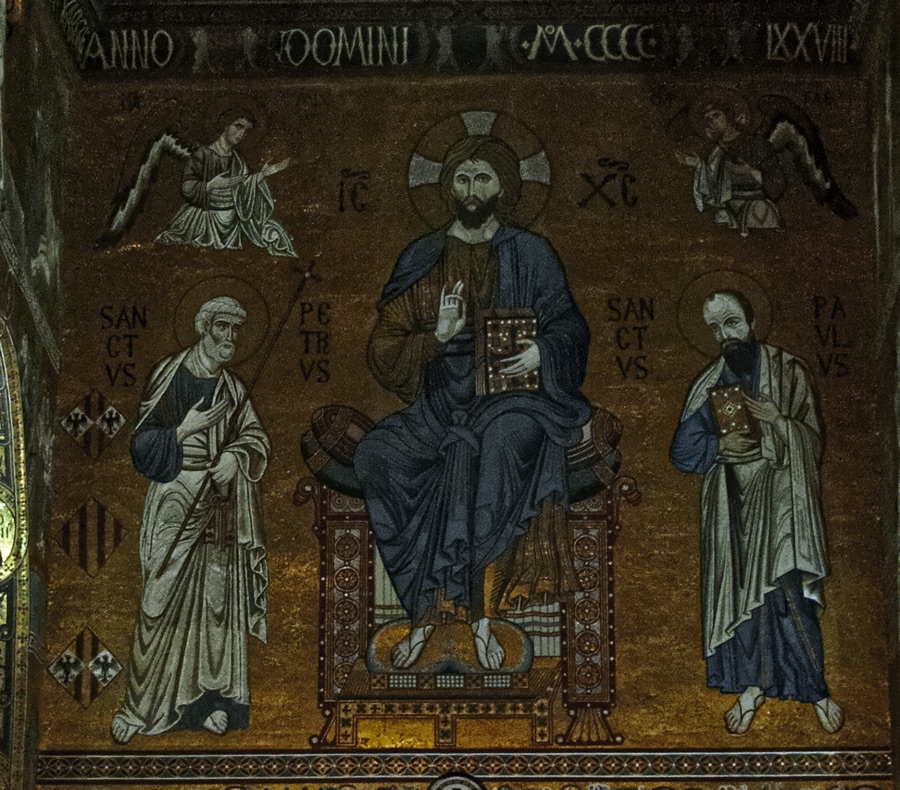Above the royal throne stands the majestic Christ Pantocrator, enthroned between Saints Peter and Paul. The iconography of the representation is political, since the enthroned Christ with the two saints seem to legitimise the temporal power of the sovereigns who presided over the celebrations from the Bishop’s throne, decorated in opus sectile. St Peter and St Paul, as well as the two archangels Michael and Gabriel, turn their gaze towards Christ Pantocrator, majestic and hieratic. The Pantocrator, from the Greek word for ruler of all things, blesses the faithful with his right hand: the two arched fingers symbolise Christ’s dual nature, divine and earthly, while the other three, joined together, are an allegory of the Holy Trinity. This hand pose was also used in ancient times by Roman emperors when they asked for silence. With his left hand he holds firmly the Gospel, depicted here as a closed volume. Usually, however, the Gospel is open and the phrase “I am the light of the world; Whoever follows me will never walk in darkness, but will have the light of life” can be read in both Greek and Latin. Christ Pantocrator, with a stern but benevolent gaze, is crowned with a crusader’s nimbus in memory of his sacrifice. He has long, flowing hair and a rosy complexion. Christ Pantocrator is the Almighty, the King of Kings. He has a golden robe, symbolic of divinity, and a blue mantle, symbolic of humanity.